Expert’s Rating
Pros
- Volume is controlled by the iFi Go and not the audio source
- XSpace, XBass, and Turbo Mode allow for useful audio tweaks
- Small size makes it easy to carry with a phone
Cons
- Streaming-quality indicators are difficult to read
- Volume must be reset each time a user plugs it in
Our Verdict
The iFi Go Bar delivers the detail listeners expect from Hi-Res audio sources, but the engineers sacrificed readability to emphasize the device’s sleek design.
If you’re interested in the Hi-Res audio files streamed by Apple Music, Qobuz, or Tidal, wireless Bluetooth headphones can’t yet deliver your music in its full-resolution glory; you’ll need to use wired headphones with your streaming source.
If that source is an iOS or Android device, you’ll also need a device to take over the digital-to-analog signal conversion and give the audio signal a boost. The iFi Go is a combination DAC and headphone amp that delivers that upgraded audio in a compact package.
The iFi Go is approximately the size of a pack of gum and it’s that small size that a big part of its allure—and a substantial reason for its relatively high price. That compact profile also means that there’s no battery in the DAC, so you’ll be drawing power from your phone’s battery.
How is the iFi Go Bar built?
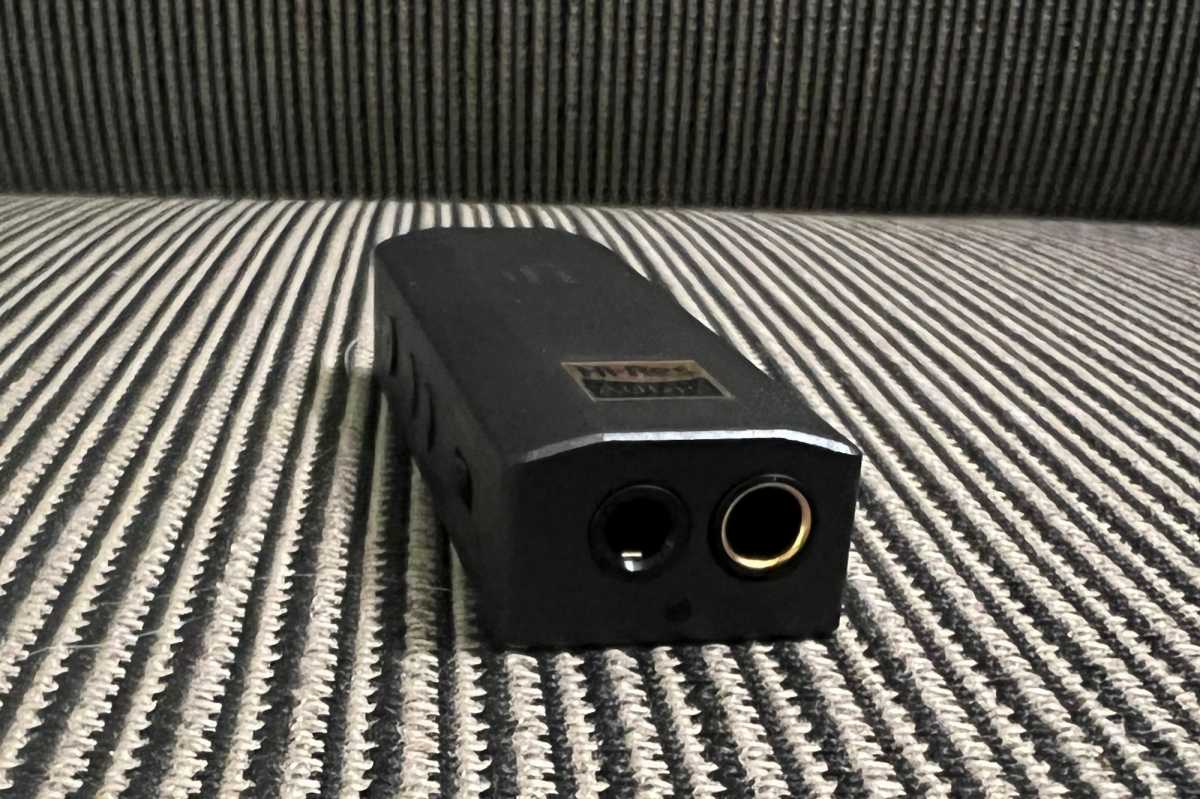
The iFi Go Bar includes jacks for 3.5mm or 4.4mm headphone connectors.
James Barber/Foundry
The exact dimensions are 2.6 x 0.9 x 0.5 inches with a weight of just 1 ounce. There’s a chamfered edge on the top of the unit, so it’s not quite a perfect rectangle. The case is made from an aluminum alloy with a black finish.
There’s also a limited-edition iFi Go Bar 10th Anniversary Limited Edition that retails for $499. The chassis on that model is copper, which is then gold-plated for a distinctive look. The unit weighs 2.26 ounces—more than double the standard version’s weight—but is still remarkably light.
Inside, the digital-to-analog conversion is powered by a 32-bit Cirrus Logic DAC chipset and iFi’s 16-core XMOS chip. There’s a GMT (Global Master Timing) femto-precision clock and intelligent memory buffer to help eliminate jitter.
The Go Bar will handle pretty much whatever formats you throw at it. There’s ultra-res PCM up to 32-bit/384kHz via USB, native Direct Stream Digital playback up to DSD256, up to 2x Digital eXtreme Definition DXD playback, and full MQA decoding.
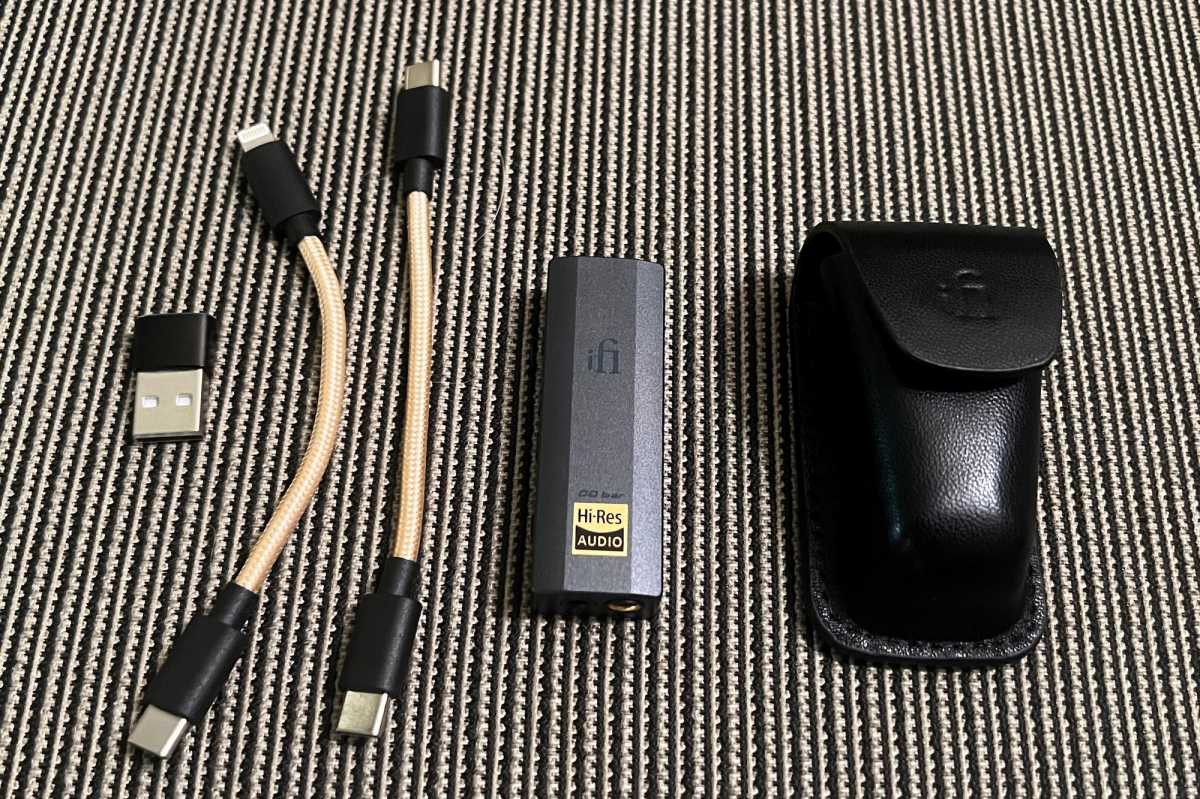
The iFi Go Bar comes with a case and cables to connect to devices with Lightning or USB-C connections. There’s also an adapter for USB-A computer connections.
James Barber/Foundry
Aside from controlling the volume from the Go Bar, you can adjust the output signal by engaging iFi’s XSpace and XBass features, along with Turbo Mode. XSpace is a processing effect designed to deliver a wider soundstage, while XBass not surprisingly boosts the bass. Turbo Mode gives a 6dB signal boost.
There are two headphone jacks, a 4.4mm fully balanced output and what iFi calls 3.5mm S-Balanced output. There’s a USB-C port on the other end and the iFi Go ships with a USB-C-to-Lightning connector for iPhone users, a USB-C-to-USB-C connector for Android users and a USB-C-to-USB-A adapter for computers.
You get a leather travel case with pockets for the Go Bar and your connector cable. There’s a belt loop on the back side and a snap closure. Even if you’re not going to put it on a belt next to your pager or phone case, it’s nice to have a case to protect the finish when it’s in a pocket or a bag.
What controls are on the iFi Go Bar?
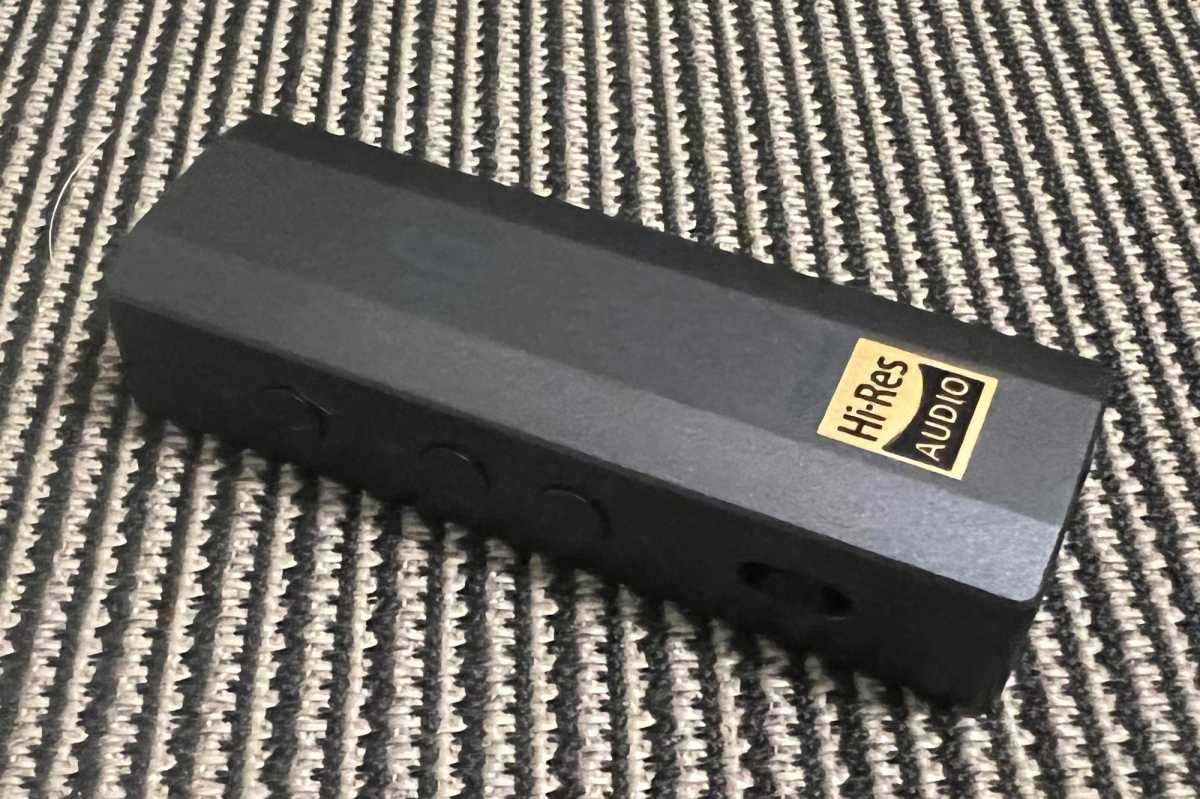
The iFi Go Bar controls include a switch to adjust output for 3.5mm or 4.4mm headphone connectors.
James Barber/Foundry
The side of the Go Bar has an IE Match switch to attenuate the power output for either the 4.4mm or 3.5mm jacks. There are two buttons to adjust the headphone output volume, which is 100-percent controlled on the iFi Go Bar and not on the source device. Pressing both volume buttons for 2 seconds turns Turbo Mode on or off. There’s also a button to engage iFi’s XSpace and XBass features.
The iFi Go Bar features indicator lights on its bottom side for 44.1/48kHZ, 88.2/96kHz, 176.4/192kHz, 352.8/384kHz, DSD 64/128, DSD 256, and MQA playback resolutions. There are also lights to show when XSpace and XBass are turned on.
The matte finish on the standard Go Bar is incredibly nice and, to keep the sleek look, designers decided to add the printed IDs for the playback resolution in a gloss finish that’s virtually the same color and in an extremely small font. You’ll need at least a direct light source to read the details and quite possibly some kind of magnification. Adding the detailed and labeled output information is a real plus, but iFi almost defeats the move by making it so hard to read.
What does the Go Bar sound like?
I tested the iFi Go Bar with an iPhone using the USB-C-to-Lightning adapter that comes with the iFi Go. I used Focal Celestee headphones, Periodic Audio Carbon in-ear monitors, and less-than-$100 Sony MDR-7506 headphones. I also compared the Go Bar to the recently reviewed Questyle M15 and the AudioQuest Dragonfly Cobalt dongle-style DACs.
No matter what volume you were enjoying before you unplugged your iFi Go, it’s going to play back at a safe, low volume whenever the DAC is first plugged in. That’s a positive safety feature and one that should be applauded and appreciated. That doesn’t make it any less frustrating when your headphones come unplugged, and you want to get back to the music but first must figure out the right volume level again.
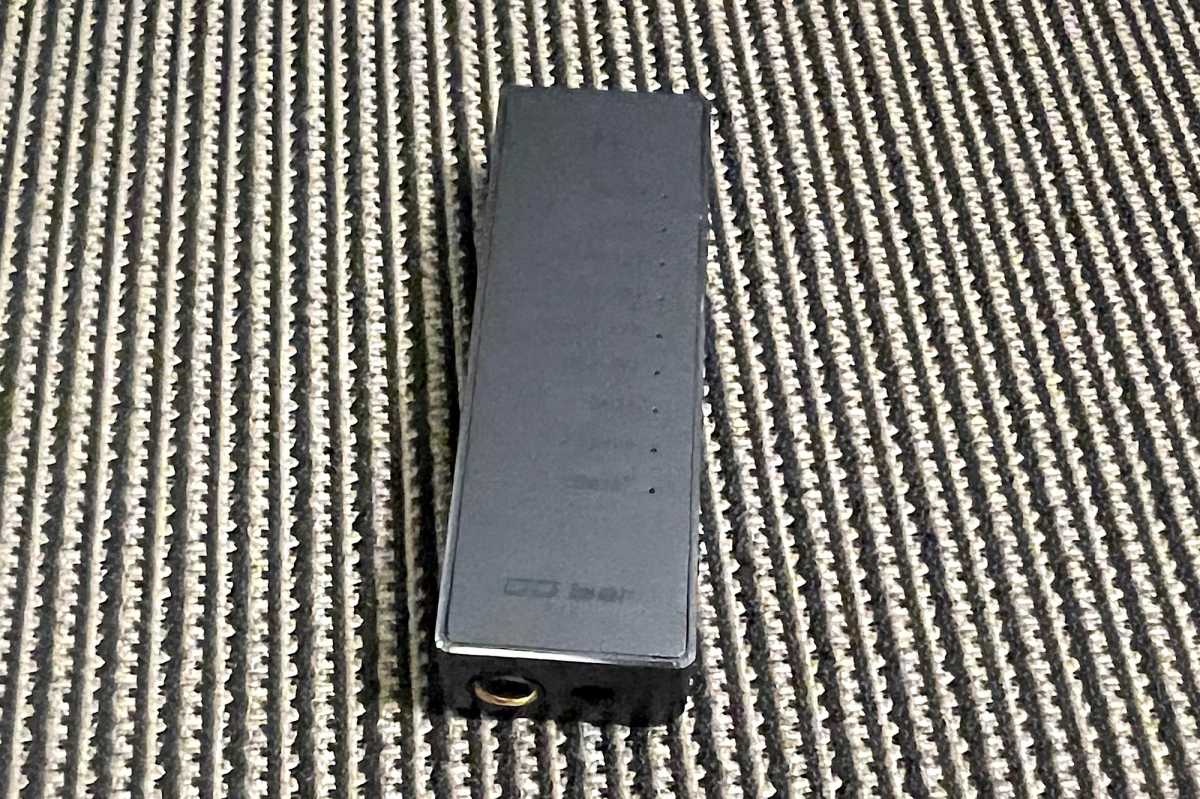
James Barber/Foundry
As I started this final testing for this review, Qobuz suggested I check out their 96kHz Hi-Res version of Deep Purple’s classic 1972 LP Machine Head, the summer soundtrack for stoner kids 50 years ago this year. The iFi Go revealed scores of musical details in “Highway Star” that never came through on the 8-track tape, especially the way Jon Lord’s distorted Hammond organ parts effectively double Ritchie Blackmore’s guitars.
That detail is a strong selling point for the Go Bar, but the whole listening experience seemed a bit underpowered until I turned on XSpace, XBass, and Turbo Mode at the same time. Those settings made Deep Purple truly rock, but they were overwhelming on a more subtle recording, like the latest 96kHz remaster of The Buena Vista Social Club, which definitely sounded better with all three turned off.
Things get a bit more complicated when comparing the Go Bar to the Questyle M15 and the Dragonfly Cobalt. While the Go Bar offers impressive detail, the M15 is slightly but noticeably more detailed. The Cobalt reproduces low-end sounds better than either of the others and offers a similar level of audio detail.
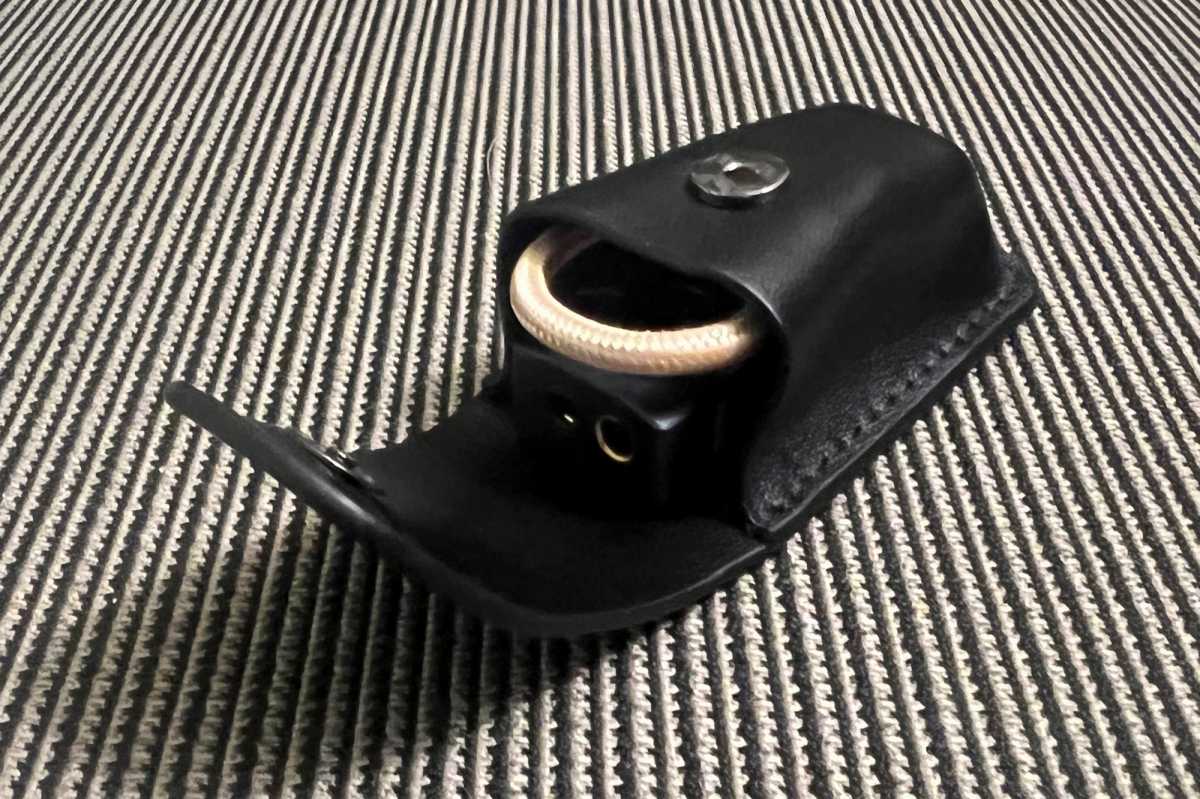
The iFi Go Bar comes with a portable case with pockets for the DAC and for the cable you use to connect to your phone.
James Barber/Foundry
The Questyle M15 may sound the best of the three, but it lacks the detailed audio playback readings offered by the other two, as well as the ability to tweak settings beyond a gain switch. The Cobalt doesn’t have any adjustment capabilities and only supports headphones with a 3.5mm connector.
The iFi Go Bar has the most configurability and would have the most detailed settings readout if the print on the dongle wasn’t so hard to read. It’s the same price as the Dragonfly Cobalt and $80 more expensive than the Questyle M15.
Bottom line on the iFi Go Bar
If you prefer the features and design of the iFi Go Bar, it’s an outstanding choice. The differences between the Go Bar’s audio quality and what you’ll get from the Questyle M15 or the Dragonfly Cobalt isn’t dramatic and, since all three are so good, your personal preferences might differ from mine.
The included case and iOS cable make this a strong value proposition for iPhone users, since the Dragonfly requires a $38 adapter and the Questyle M15 needs a $20 Lightning cable that’s not included with the DAC.
If only someone on the development team had raised a hand and pointed out how hard it is to read the printing on the device, the Go Bar design could have been fixed and we’d be looking at the best resolution readout we’ve seen to date.




